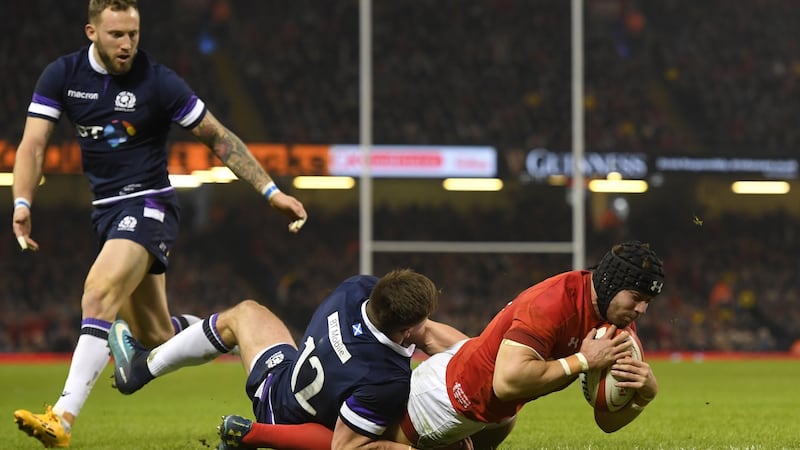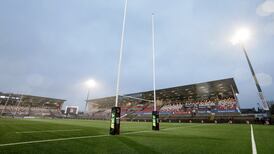The moment Tadgh Furlong's hamstring pulled up against Italy the Welsh scrum doctor, Robin McBryde, started planning an all-out attack on the Wexford man's replacement. Although Andrew Porter's selection is deserved, Welsh plans are now full steam ahead. Stephen Archer or John Ryan may have had more tighthead knowledge for this battle as Wales tighthead Samson Lee will likely abandon Cian Healy so loosehead Rob Evans and hooker Ken Owens can target Porter.
This will place the symbiotic relationship between Porter and his secondrow, (Devin Toner or James Ryan) under immense pressure. The discomfort Wales place on Porter will force a reaction, an outcome which will force him into an unusual counteraction position. What does Toner do should Porter be sucked down a Welsh rabbit hole? Does he keep the pressure on both Porter and Rory Best or ease off? Does he communicate through an intermediary, “what’s going on Andrew?”
Toner will react instinctively with body position, power and throttle. This relationship takes years to perfect, so temper your ambitions for Porter, especially around the park. Wales conceded 11 scrum penalties last season: eight for breaking the bind, so watch Evans’s and Lee’s bind. Is that a weakness?
Our scrum is a hugely valuable resource and one we score tries from much more often than Wales, so they’ll want to disrupt our platform and psychology. Many pooh-pooh this wonderful set-piece. Boo to you! It remains the most fascinating aspect of our game and one when considering the ridiculously narrow margins of the Six Nations, really does matter. There are only 10-15 scrums in each international game but each is so varied.
Helter skelter
Wales are the greatest threat to our Grand Slam ambitions. Why?
First of all this fixture is helter skelter. Last year’s game had the most ball in play of any Six Nations game. We know from the same Six Nations statistics that Wales make a million passes, look great, but rarely score beyond phase eight.
Maybe Scarlets coach Wayne Pivac is Warren Gatland's greatest asset because Wales are not creating phases like we do. They keep the ball off the deck as their forwards are far more at ease in openfield (maybe's it's a Pivac policy) blending in with their backs. Ireland players are beginning to offload but in pre-ordained plays such as our exit strategy. But the Wales forwards hunt for offloads in general play.

So where have Wales improved/changed thus far? Much of Wales’s style is based around Munster’s and indeed Ireland’s: get into the opposition 22 and pound away till dawn. But Leigh Halfpenny changed that against Scotland where on 11 minutes he scored Wales’s second try.
This was a crucial score for many reasons. First of all at 7-0 the game was still very much a contest with Wales rooted to their game plan. So when they breached the Scottish 22 they went back infield to a big carry – standard Wales. Then Gareth Davies hit Cory Hill wide and flat with Alun Wyn Jones trailing for the tip on or latch on. Scotland sat and bit but Hill swivelled to Scott Williams as six Scots got sucked into the play with four more inside, leaving a four on two for Williams to convert. Steff Evans had come around from his left wing, joined the line, and was skipped to Halfpenny who scored.
This phase is so important. Traditionally Munster, Ireland and Wales would pound the line, but Wales have an obvious plan to hunt much earlier for the space. How often I’ve sat in Thomond Park as Munster belt away to get their try after multiple phases when all along Keith Earls is standing in space and free. Wales adjusted and Scotland paid the price.
Second of all, it is actually much harder and takes much longer to score tries against Wales than England or Scotland. Not to mention they’ll have about 50 per cent possession.
Bamboozled by the ball
Defensively they stack 13 in a line with two floaters behind. Technically they are also a vast improvement on the hapless Italians in many ways: they’ll chop tackle and target the ball by double teaming the one-out carry forcing turnovers and close to their own line they don’t get bamboozled by the ball sitting in the Irish ruck. They swivel their eyes over and back which limits Irish players sneaking in from a one-out pass.
It’s going to be a clash of culture. Wales scored one try last season from three-plus rucks and mauls, Ireland eight tries. So where can Ireland attack? What tactics? In the trenches or speed it up? This fixture demands the ability to switch between both like no other. But with ball in play in mind, Ireland have already had nearly twice as many successful lineouts than their opposition thus far. They are denying their opposition the launch pad of lineouts.
This is particularly important against England but almost as important against Wales. But when you factor in the how few tries Wales score from inside their half (one in the last Six Nations) then Ireland should kick long but short of touch. This will deny Wales a launching platform but also Andy Farrell will know that Wales are least dangerous (save for Liam Williams) from deep.
Both sides’ penalty counts are brutally low. Limit lineout and penalty goals so Wales get into a slug fest and Ireland will win but gift turnovers (from being chop-tackled and double teaming one-out carries) and allow them three-second recycle phases and Wales will win.
Against England, Wales worried me in one specific way: their spirit, conviction and grit was so impressive. They’ve less mental baggage than Ireland. Both sides are changing their game plan with Wales exposing space, especially close to the whitewash. When Ireland get that close can they do the same?
liamtoland@yahoo.com
















